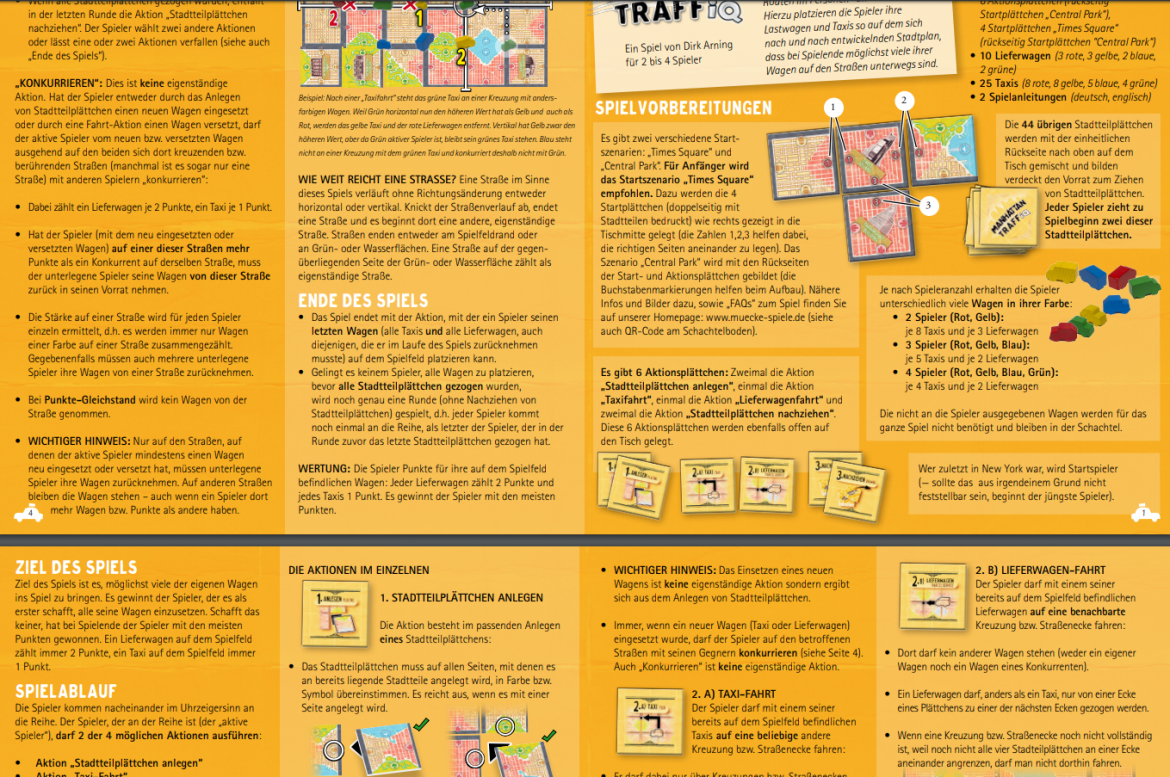You can download the complete rules as PDF from here.
Two to four players are competing on the streets of Manhattan for the most lucrative routes. The city “that never sleeps” is subject to constant change. As the game progresses, a new map of New York develops, again and again. On this players place their trucks and taxis. Whoever has the most vehicles on the streets at game end, wins.
The player who is doing his turn (the “active player”), selects from the following actions:
1. Attach City Tile
This action allows the proper placement of a city tile. A placed tile must match colors on all of its sides with its adjacent tiles (red, beige, green and blue). If a large square of four tiles results from the placement of the tile the player may immediately a take a vehicle from his supply (choice between taxi or truck) and place it on the resulting intersection.
2a. Taxi Ride
The player may take one of his taxis already present in the game and move it to any crossing / street corner. It may only pass through through intersections / street corners on which there are no other vehicles though.
2b. Truck Delivery
The player may take one of his trucks already in the game and move it to an adjacent intersection / corner as long as there is no other vehicle there (neither one of his own nor of a competitor). A truck may, unlike a taxi, only move a distance of one tile and also only along completed streets.
3. Draw City Tile
The player may draw a face down city tile, as long as there are any left to be drawn.
4. Compete
If the active player has placed a new vehicle, either by placing a city tile or by move a taxi or truck, than the two intersecting / touching roads from the new or relocated vehicle are evaluated (sometimes it is only one road). A truck counts as two points, a taxi one point each. If the player who just moved or placed his vechicle on one of these roads has more points than a competitor on the same road, the losing player must take vehicle car from the road back to his supply. The vehicles of each player are counted independently, so that possibly even more losing playesr must remove their vehicles from the road. In the case of a tie no vehicle is removed from the road.

